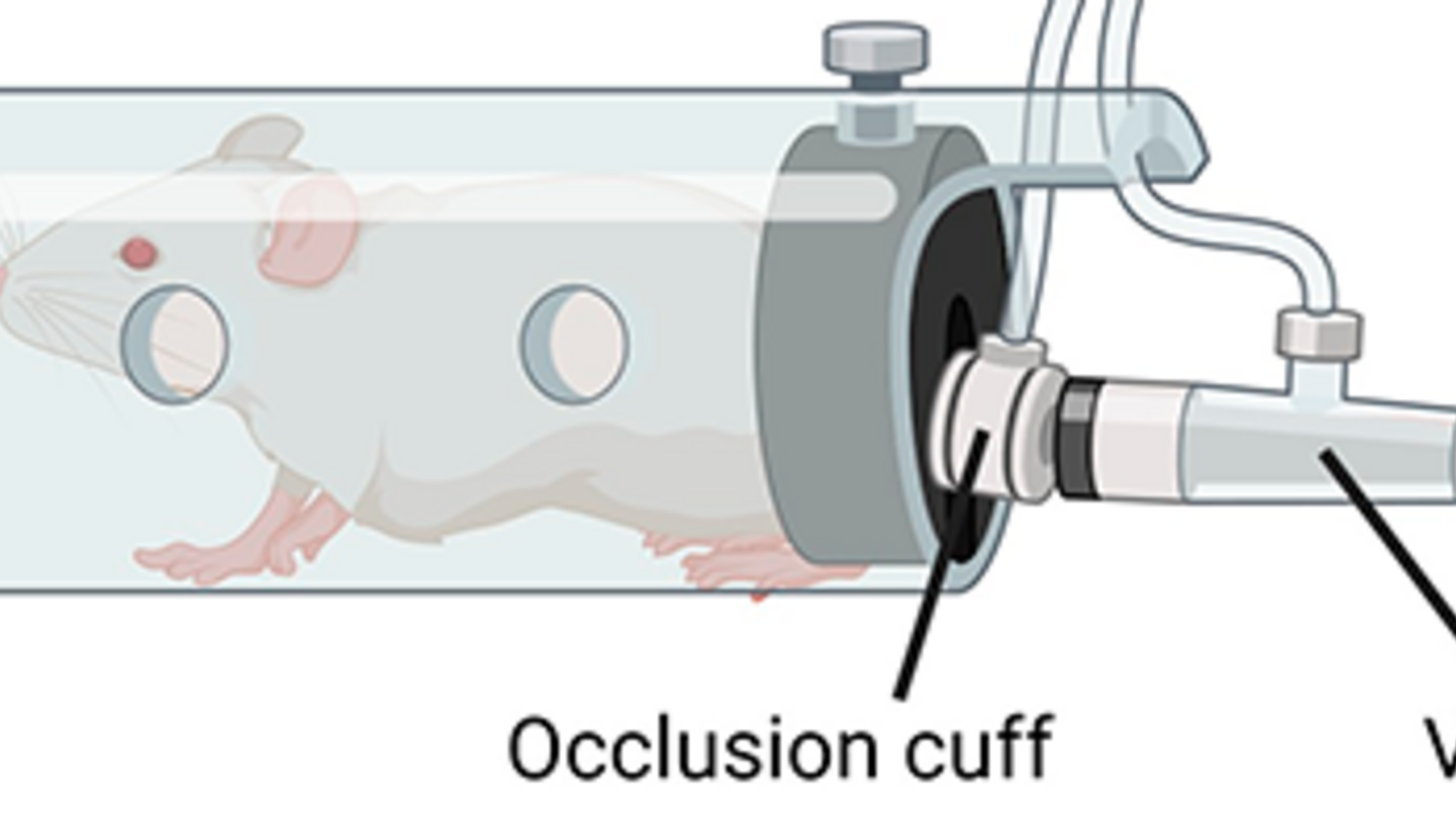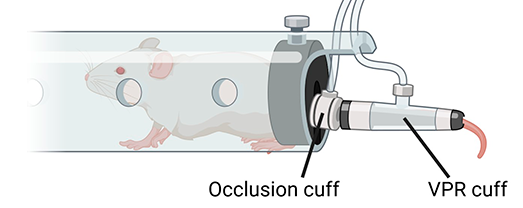Telemetry and blood pressure measurements
Accurate and reliable blood pressure measurement can be essential for understanding the physiology and pathology of cardiovascular disease. We offer both non-invasive (traditional sphygmomanometers) and invasive (telemetry) methods.

Need help?
Send an email to phenotyping@biomed.au.dk
and we will get back to you as soon as possible.
Telemetry
Applications in brief
Telemetry allows in situ collection of various data types from an implanted cordless transmitter without restraint or handling of the animals. The type of collected data depends on the implant type, making telemetry a relevant tool for e.g. behavioural, sleep and pain studies.
Features
Transmitters can be implanted subcutaneously or intraperitoneally. Implants normally have a main feature, but are often not limited to these measurements.
For data collection including:
- blood pressure
- ventricle pressure
- bladder pressurec
- cranial pressure
- biopotentials (ECG, EEG, EMG or EOG)
- movement
- temperature
- respiration
- glucose concentration (e.g. for metabolic and diabetes studies)
Which species may I investigate?
- Telemetry implants are available for mice (up to 24 simultaneous measurements possible).
- Telemetry implants are also available for rats.
- Do not hesitate to contact us, if you need telemetric analyses of other species.
Location
Telemetry equipment is located in the Skou building animal facility. Therefore, please familiarize yourself with guidelines and regulations regarding animals as well as user quarantine regulations.
Pricing
Telemetry equipment is available for rental, and fees are given per animal for the duration of the rental period. Prices include surgery and data collection. In case of advanced data analysis and interpretation, please contact us on phenotyping@biomed.au.dk - we are happy to help!
Training and Manual
Tips and Tricks
More information on telemetry in behavioral, sleep and pain studies.
Specifications
| PA-C10 transmitter | |
| Data type | Data type depends on implantation site systolic, diastolic and mean pressure, as well as BPM, animal activity and respiratory rate (arterial implantation site) left ventricular pressure bladder pressure intra-cranial pressure |
| Animal size | > 17 g |
| Battery life | 4-6 weeks |
| Resusable | yes |
| HD-X11 transmitter | |
| Data type | Features in addition
|
| Animal size | > 19 g |
| Battery life | 4-6 weeks |
| Resusable | yes |
Booking
Telemetry
- Contact us on phenotyping@biomed.au.dk for euipment booking
- Book the room in the Outlook calendar; 1115-K43 Telemetry
- For general information on booking procedures, go to Booking
Tail-cuff for non-invasive blood pressure measurements
Applications in brief
With the Coda4 Tail-cuff system, blood pressure can be measured in up to 4 restrained, alert mice.
Features
With an inflatable tail-cuff, the blood flow in the tail is temporarily occluded, and systolic and diastolic pressures are registered as air is released from the tail-cuff, allowing blood flow to return to the tail. Animals should be trained for the procedure to avoid stress.
Which species may I investigate?
Tail-cuff equipment for mice allows up to 4 simultaneous measurements.
Location
Tail-cuff equipment is located in the Skou building animal facility. Therefore, please familiarize yourself with guidelines and regulations regarding animals as well as user quarantine regulations.
Training and Manual
Tips and Tricks
Should I perform training sessions?
Animals should be trained for the procedure to avoid stress.
Booking
Tail-cuff
- book the equipment in the Outlook calendar, 1115-K43B Tail cuff
-
For general information on booking procedures, go to Booking




